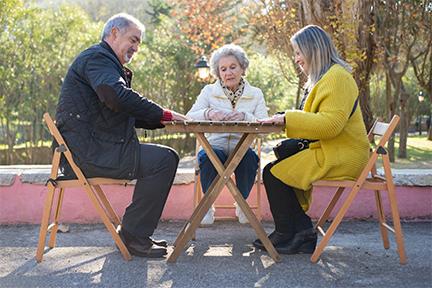
Living with post-traumatic stress disorder (PTSD) is a challenging journey, particularly for seniors who have faced traumatic events like war, violence, abuse, or natural disasters. This mental health condition, as highlighted by the American Psychological Association, affects about 8% of Americans at some point in their lives, with a notably higher prevalence in older adults, especially veterans. It manifests through intense symptoms such as flashbacks, nightmares, anxiety, depression, and feelings of anger and guilt.
The impacts of PTSD extend beyond psychological symptoms. As we age, the condition can adversely affect cognitive functions, memory, and decision-making abilities. It also increases the risk of developing other health problems, including heart disease, diabetes, and dementia. Socially, PTSD can lead to a sense of isolation, making individuals feel disconnected from family, friends, and the community, often spiraling into loneliness and suicidal thoughts.
Despite these challenges, there is hope and effective strategies for seniors battling PTSD.
This blog post aims to offer a thorough guide on managing PTSD, covering aspects from professional treatment to self-care and alternative therapies.
Seeking Professional Help and Treatment
One critical step in managing PTSD is seeking professional help and treatment. PTSD is a complex condition requiring specialized care. It's essential to start with a proper diagnosis from a mental health professional who can assess your symptoms and history. This diagnosis paves the way for accessing suitable services and resources. You can find a PTSD provider using resources like the PTSD Treatment Decision Aid or the Find a Therapist Directory.
Once diagnosed, various evidence-based treatments are available. These include Cognitive-behavioral therapy (CBT), which challenges negative thoughts related to trauma; Exposure therapy, which helps confront and process traumatic memories; Eye movement desensitization and reprocessing (EMDR), which uses eye movements to process trauma; and medication, which can alleviate distress but should be combined with other therapies. For more information, the PTSD: National Center for PTSD and the National Center on Elder Abuse are excellent resources.
Building a Strong Support Network
Social support is another cornerstone of managing PTSD. A robust support network can significantly alleviate stress and bolster coping mechanisms. Ways to build this network include:
Support groups: Organizations like the National Alliance on Mental Illness and the Sidran Institute can help find local groups.
Family and friends: Maintaining regular contact with loved ones can provide emotional and practical support.
Volunteering: Platforms like VolunteerMatch and Senior Corps can connect you with volunteering opportunities, fostering a sense of community and purpose.
Pets: Adopting a pet from platforms like Petfinder or Adopt a Pet can bring companionship and reduce feelings of loneliness.
Practicing Self-Care and Wellness
Self-care and wellness are key in managing PTSD. This includes eating nutritious foods, engaging in regular physical activity, ensuring sufficient sleep, practicing meditation, and indulging in hobbies and leisure activities. Resources like the Dietary Guidelines for Americans, the Physical Activity Guidelines for Americans, and the Sleep Well Toolkit provide excellent guidelines for these practices.
Considering Alternative Therapies
Alternative therapies offer additional benefits for managing PTSD. These include acupuncture, yoga, massage, music therapy, and art therapy. The National Center for Complementary and Integrative Health and the National Institutes of Health provide more information on these therapies.
Exploring Cannabis as a Potential Option for PTSD Management
The use of cannabis in managing PTSD symptoms is an area that has seen growing interest. While some individuals have reported benefits, it's crucial to approach this option with a well-informed perspective, considering both the legal aspects and the potential effects on health.
Firstly, understanding the legal status of cannabis in your area is paramount. Resources like the National Organization for the Reform of Marijuana Laws and the Marijuana Policy Project offer up-to-date information on cannabis laws. This knowledge is essential before you proceed with considering cannabis as a treatment option.
Moreover, cannabis might offer relief for certain PTSD symptoms, such as anxiety and sleep disturbances, due to its cannabinoids and terpenes. However, it is equally important to be aware of potential side effects, including mood changes and cognitive impairment. Consequently, consulting healthcare professionals becomes an indispensable step in this decision-making process.
Additionally, the choice of cannabis strain and its dosage plays a critical role in its effectiveness. Strains like Pennywise and Harlequin, which are higher in CBD, and OG Kush, known for its THC content, are often considered. Furthermore, the terpenes, like Linalool, known for their calming effects, are important to consider. In this context, companies such as True Blue, which provides all-natural terpenes that can be added to cannabis and THC, make it easier to customise to your needs.
In conclusion, while cannabis may offer potential benefits for managing PTSD, it's important to remember that it's not a one-size-fits-all solution.
Summing Up
This blog post has aimed to equip you with knowledge and resources to manage PTSD in your senior years. Remember, you're not alone, and there are numerous people and therapies to support your journey towards healing. You deserve a fulfilling life, regardless of age or circumstances.
Photos: pexels.com
